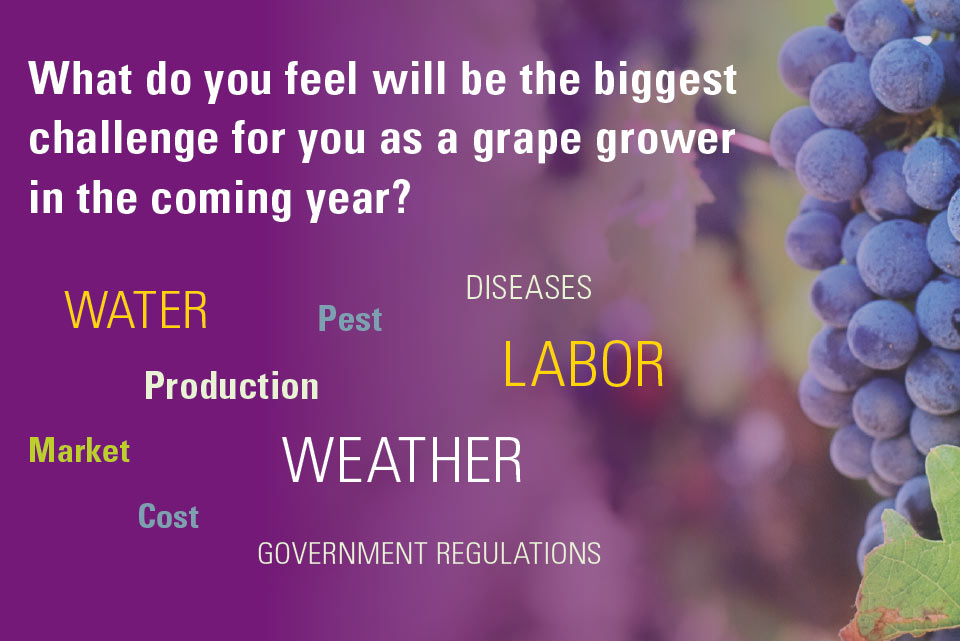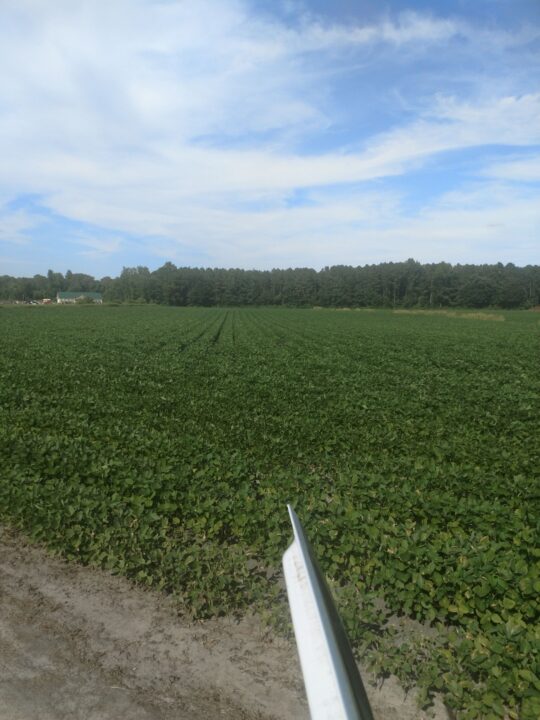Grape Growers Say Season Affected by Weather, Water, and Regulation Woes
Drought. It’s something winegrape growers in the Finger Lakes got a dose of during the 2016 growing season. It is, however, part of the growing conditions for California grape growers. While less water often means smaller, sweeter berries, it can prove problematic for nurturing young vines.
 In fact, nearly 54% of grape growers who took our second annual State of the Industry survey said a weather extreme – drought, flooding, extreme cold – was a part of the growing season’s conditions for 2016.
In fact, nearly 54% of grape growers who took our second annual State of the Industry survey said a weather extreme – drought, flooding, extreme cold – was a part of the growing season’s conditions for 2016.
One grape grower from California, whose vineyard has been in operation for more than 50 years, replied quite simply, “we are in central California, it is always extreme here.”
However, weather was a big factor to a Southeastern grape grower whose vineyard is more than 25 years in operation.
“Days above 95°F have increased, chill units have decreased, spring frosts are more than a week earlier,” he says. “Droughts which are normally three to four weeks now stretch out to 10, I have a global warming adaptation and mitigation plan, and we are in third year of implementation.”
Another grape grower from the Southeast says his vineyard, which has been in operation for more than 25 years, says the 2016 growing season brought “too much rain for six weeks and the last three months [brought] exceptional drought.”
Flooding also hit a Midwestern grower whose vineyard has been in operation for more than 10 years.
He says following the flood, the staff of his vineyard was “left on our own after losing everything including this year’s income.”
“Cold winter weather and late frost issues,” plagued a Midwestern grape grower whose vineyard has been in business for more than 25 years. To cope he’s “planting more cold-hardy varieties later budding.”
In the other extreme, growers in the West struggled with access to water.
A grower/packer in the West in operation for less than ten years says the biggest challenge to his vineyard is “Water use. It’s expensive.” His vineyard also experienced “Extreme and prolonged heat. Our vines are new and required constant watering.”
A grower in the West whose vineyard has been in operation for more than 50 years says the biggest challenge to his vineyard is “Water and government. Our hands are tied.”
 Pest Pressure
Pest Pressure
Pressure from diseases, insects, and pests such as deer, turkeys and birds also plagued many growers this past growing season.
A Southeastern grape grower whose vineyard has been in operation for more than 25 years says there has been some challenges from reducing the cost of pest management, including “Pierce’s disease, grape root borer, and nematodes.”
A Midwestern grower has now turned his focus to controlling deer. His vineyard, which has been in operation for more than 25 years, has been hit hard by deer in the past.
“Two years ago my normal $8,000 to$12,000 winery payment was $185.63 for a whole year’s work,” he says. “My neighbor kept the vineyard ‘clean.’”
He also says “my Bird Scare Super Pro sound system has done a great job for the past three years.”
A Midwestern grower whose vineyard has been in operation for more than 10 years said birds and other pests hit his vineyard hard.
“We are experimenting in the coming year with quality control and protection via cluster bagging in grapes and exploring biocontrols for some insects,” he says. “We do not use pesticides and only use fungicides because Missouri is fungi heaven!”
A Northwestern grower/packer in business for more than 50 years says he’s challenged by mildew and grape leaf curl. But, unrelated to pest pressure, he’s faced challenges from securing contracts.
“Lack of contracted tonnage due to higher yields and not enough storage capacity with most wineries,” he says.
This was echoed by a grape grower also in the Northwest whose vineyard has been in operation for more than 100 years.
He says he’s been challenged in “getting wineries to sign contracts so we can plant more acreage.”
Water/Labor/Regulations
In the other extreme, growers in the West struggled with access to water. A grower in the West whose vineyard has been in operation for more than 50 years says the biggest challenge to his vineyard is “Water and government. Our hands are tied.”
A grower in the West whose vineyard has been in operation for more than 25 years says he struggles with “government regulations that take time to comply with but do not change or help the way the way we farm.”
Another grower/packer in the West whose business has been in operation for more than 50 years says his business is challenged by “Water, labor, over-regulation by local, state, and federal authorities.”
Labor was another struggle for many grape growers. A grape grower in the Midwest whose vineyard has been in operation for more than 10 years says he’s struggled with “getting enough help at harvest.”
Growers across the country are concerned with how the new minimum wage laws will impact their businesses. However, a grower/packer in the West whose business has been in operation for 50 years sees a bright spot. He says “the increase in minimum wage and overtime pay will bring more labor into agriculture.”










